Merryn Omotayo Alaka: In Her Own Words
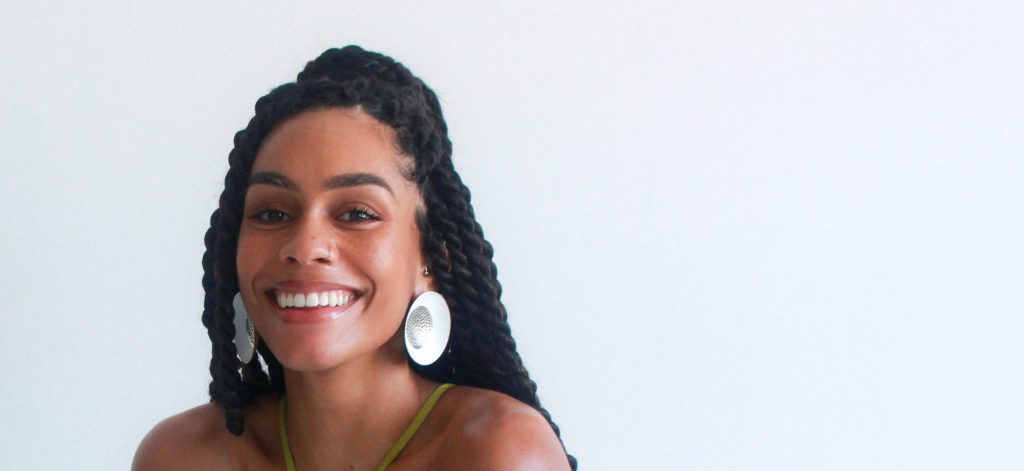
Jul, 14, 2020
ArtistsCommunityPhxArtist Spotlight
Merryn Omotayo Alaka: In Her Own Words
For Merryn Omotayo Alaka, artmaking is a journey, a process of discovery about her family, her culture, her practice, her self. Her contemporary lithographs and textiles, jewelry collections and large-scale sculptures are steeped in history, paying homage to a beloved grandfather, drawing inspiration from West African textiles from the 1950s, working to reconcile the past with the present to envision a limitless future.
Originally from Indianapolis, Alaka has lived in Phoenix for five years and earned her BFA in printmaking in 2019 from Arizona State University (ASU). Her work has been exhibited nationally and was most recently featured in the 2018 Arizona Biennial. She is also the co-curator and assistant gallery manager at Modified Arts in downtown Phoenix, where she has independently curated three exhibitions, including Oracles of the Other, which explored Afrofuturism.
But enough from us. Here’s Merryn Omotayo Alaka, in her own words.
“I’m inspired by my culture, family traditions, and family history. The work I create is how I understand all those aspects of my life. It’s personal.”
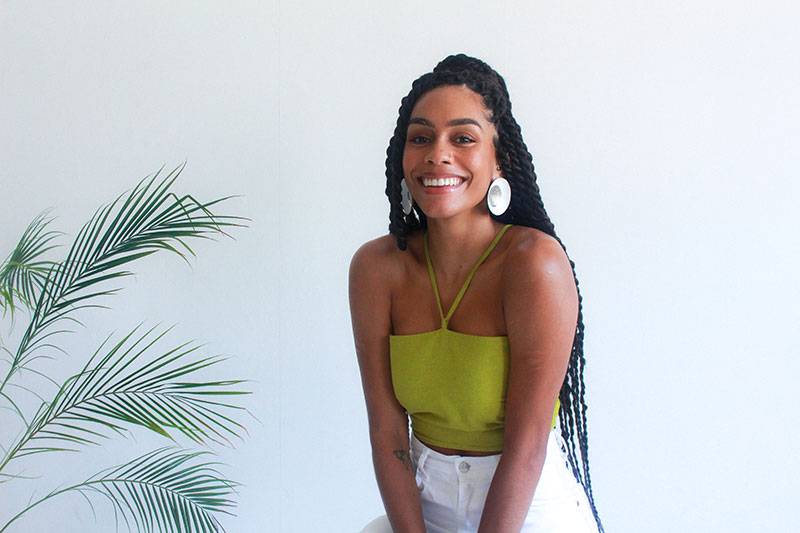
Merryn Omotayo Alaka, 2020. Photograph by Zhane’l Speaks.
PhxArt: How did your journey as an artist begin?
Merryn Omotayo Alaka: Growing up, I was always interested in art. Throughout elementary, middle, and high school, I put the most time and effort into my art classes. I had great relationships with my art teachers, and from a young age, I was inspired to be like them. Aside from my teachers, the only other artist I knew growing up, in my eyes, was my Aunt Phoenix. She created mixed-media and collage art, and I used to spend summers visiting her and my cousins in Salt Lake City. In high school, I really admired her and the work she created and I remember wanting to be just like her.
Going into college, it felt obvious to me that I was going to study art. I knew I was equally talented in other areas of study and even thought about studying anthropology or the humanities, but in the back of my mind, I knew I was most driven by art.
PhxArt: What were some formative moments on your path to becoming a working artist that brought you to where you are today?
Alaka: During my time at ASU in the School of Art, I experimented with different art forms such as drawing and painting, but I felt limited—I was never fully comfortable in those mediums. When I took a printmaking class to learn the basics of lithography, screen printing, and relief printing, I immediately knew that was what I wanted to focus on. Printmaking is a very labor-intensive art-making practice, and I completely fell in love with that aspect of it. It’s an extremely versatile medium, and it felt like I’d finally found, in a sense, the tools to create the work I wanted to create.
During those initial years of studying printmaking, I was also rekindling estranged relationships with members of my family and became very interested in my Nigerian heritage. My dad was born in Lagos, Nigeria, and came to the United States to study in the pharmaceutical and medical field, but I still have a lot of family in Lagos. I started studying art of the Black Diaspora and knew that was a realm and space from which my work could be understood. I’m inspired by my culture, family traditions, and family history. The work I create is how I understand all those aspects of my life. It’s personal. I find what is most motivating for me is creating work that allows me to really explore my thoughts, ideas, and understanding of the world. I often feel like I learn more about myself during the process of creating new work.
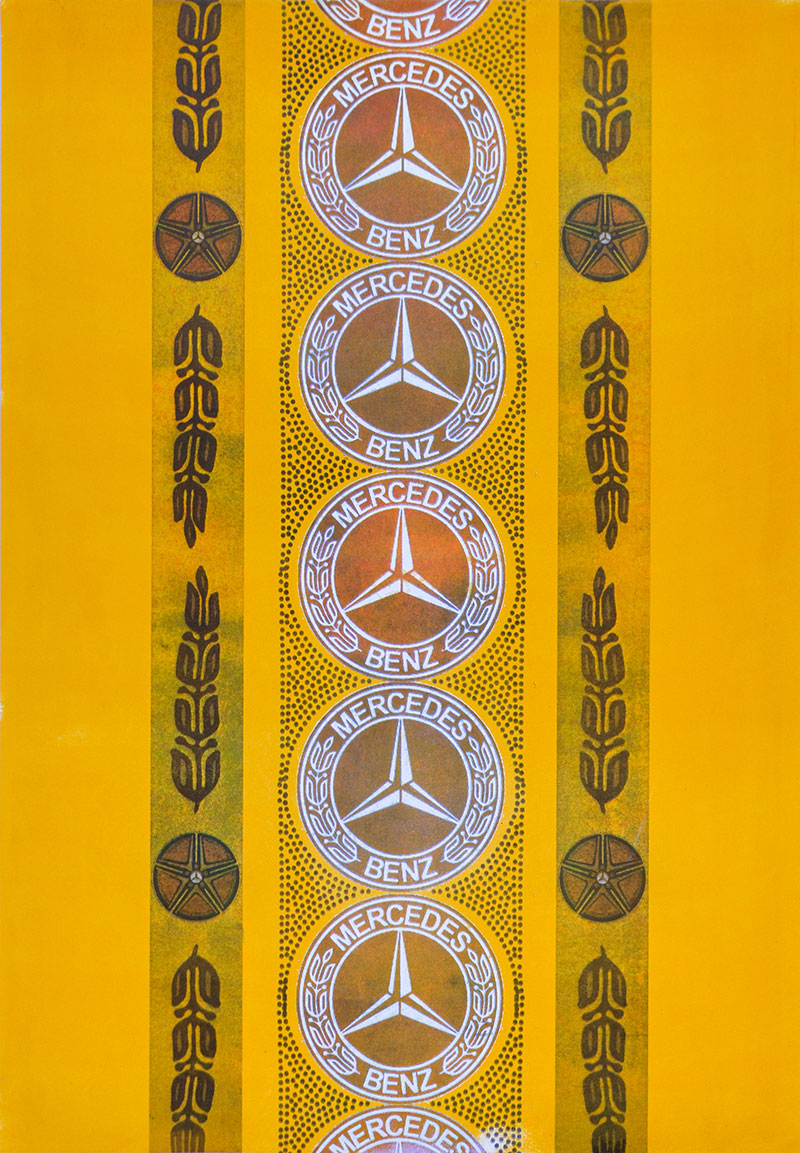
Merryn Omotayo Alaka, The Best or Nothing, 2019. Stone lithograph. Courtesy of the artist.
PhxArt: Tell us about some of the stories you strive to share through your work, and as a multimedia artist, what are some of the materials prevalent in your practice?
Alaka: Most of my work is influenced by different aspects of Black and African culture. My printmaking work is inspired by African textiles, specifically Holland wax prints called Vlisco prints. The history of Vlisco prints is complicated and layered. These textiles originated from Holland but found their primary market in West Africa during the 1950s. The fabrics carry vibrant and detailed colors and patterns, all of which create various motifs and narratives. Women began wearing specific textiles with certain patterns as a subtle way to present aspects of their lives, for example when they wanted to bring good luck to newlyweds. Other textiles and their patterns, however, may have represented love, faith, and prosperity.
Within my print work, I wanted to create my own narratives about my life and my family’s history as I contextualized it. I created a print titled The Best or Nothing, which was bright yellow with patterns of laurels wreaths, car rims, and the Mercedes-Benz logo. The piece is a narrative about my grandfather’s love of German cars and pays homage to his beloved yellow Mercedes. Because my grandfather passed away when I was really young, the only way I was able to connect to him was through old photographs and stories, and one of my favorites was a snapshot of his yellow 1970s Mercedes W115.
My sculptural and metal work, on the other hand, is very much influenced by forms of adornment especially prominent within Black culture. I have used synthetic hair from my local beauty supply store, Remy Co, to create sculptures and jewelry pieces that speak to the relationship women of color have with their hair as well as the extensive history of the politicization of Black hair. My piece titled Its Mine, I Bought It was a collaboration with another local artist, Sam Fresquez, for which we used hair to create an installation of large-scale tassels. That installation was about bringing together the separate histories of hair and tassels as objects both used to represent class and wealth.
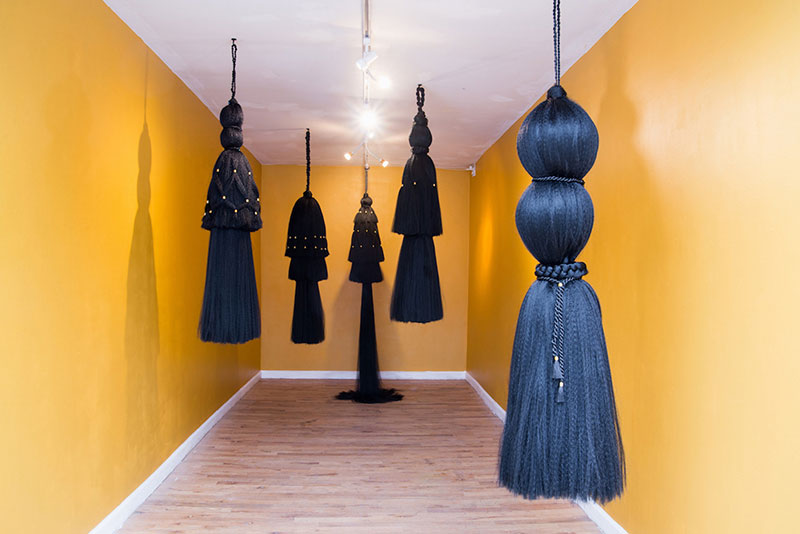
Merryn Omotayo Alaka and Sam Fresquez, It’s Mine, I Bought It, 2018. Synthetic hair. Photograph by Josh Loeser.
In some of my recent jewelry pieces, I found myself inspired by the culture and history of nails as a form of adornment and created a collection of rings titled Mama Benz. The rings are worn on your cuticles with fingernail extensions meant to highlight your nails. Mama Benz references the term that was coined in the 1950s in West Africa and was given to women who became wealthy from trading textiles. And then with their wealth, they bought expensive German cars like Mercedes-Benz. These women redefined gender norms and worked their way up from nothing. The collection pays homage to all working-class women and entrepreneurs in the world and is a symbol of the power and prosperity that are available at the tips of our fingers.
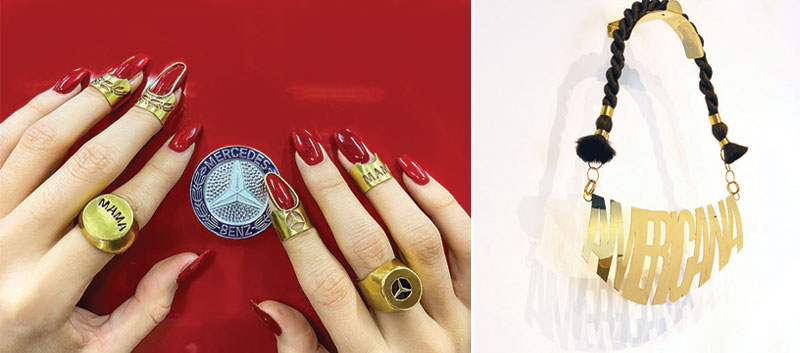
Merryn Omotayo Alaka, Mama Benz Rings, 2020. Brass. Courtesy of the artist; Merryn Omotayo Alaka, Americana, 2019. Brass and synthetic hair. Courtesy of the artist.
PhxArt: Who inspires and influences your work?
Alaka: Visual artists that I am most influenced by include Lorna Simpson, Sonya Clark, Carrie Mae Weems, Kara Walker, Mickalene Thomas, Kehinde Wiley, and Njideka Akunyili Crosby. That’s just to name a few though because I could go on and on. Local artists that constantly inspire me are Sam Fresquez, Papay Solomon, Antoinette Cauley, Marcellous Lovelace, Mia Adams, Briana Noble, Steffi Faircloth, Estrella Esquilín, Diana Calderon, and so many more!
PhxArt: What is in the works for you? What can our community expect to see next?
Alaka: I’m working on a couple of things at the moment. I’m recreating my collaborative installation It’s Mine, I Bought It for an exhibition opening this fall, I’m creating some textile pieces and designing patterns that will be printed on fabric, and I’m also working on some jewelry pieces since I sell those most frequently.
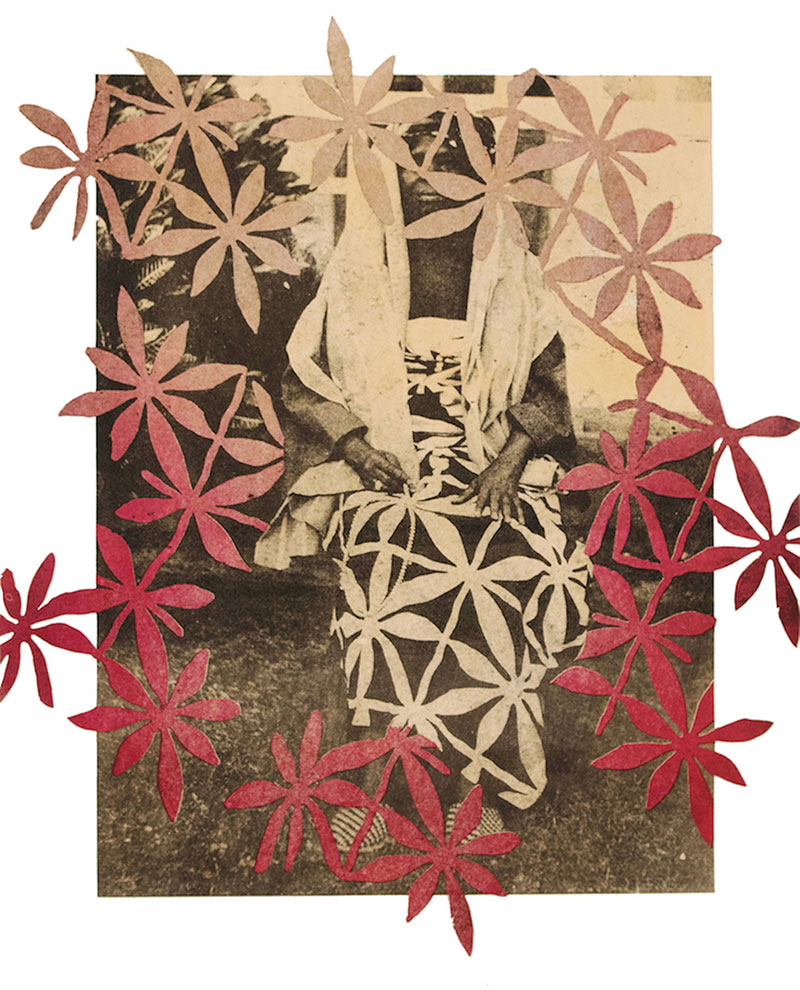
Merryn Omotayo Alaka, Iya Iya Wosilatu, 2018. Stone lithograph. Courtesy of the artist.
See more
To discover more works by Merryn Omotayo Alaka, visit merrynalaka.com, follow her at @merrynalaka, and be sure to check out a selection of her work at Lisa Sette Gallery this fall. Her jewelry work is available for purchase at Noons (@___noons) in downtown Phoenix and through Alaka’s website and Instagram page.
#CreativeQuarantine
We’re curious how creatives are navigating the time of coronavirus. Merryn Omotayo Alaka shares what’s giving her life as a creative during quarantine.
Alaka: It seems to vary week by week! I’ve been reading more in my free time and have finished a couple books, including Why the Caged Bird Sings by Maya Angelou, Becoming by Michelle Obama, and the first two books of an amazing trilogy inspired by Afrofuturism—Children of Blood and Bone and Children of Virtue and Vengeance—written by Tomi Adeyemi. I’ve been doing yoga here and there, and I have spent more time really thinking about my future as an artist and what I hope to accomplish.
Categories
What can we help you find?
Need further assistance?
Please call Visitor Services at 602.257.1880 or email